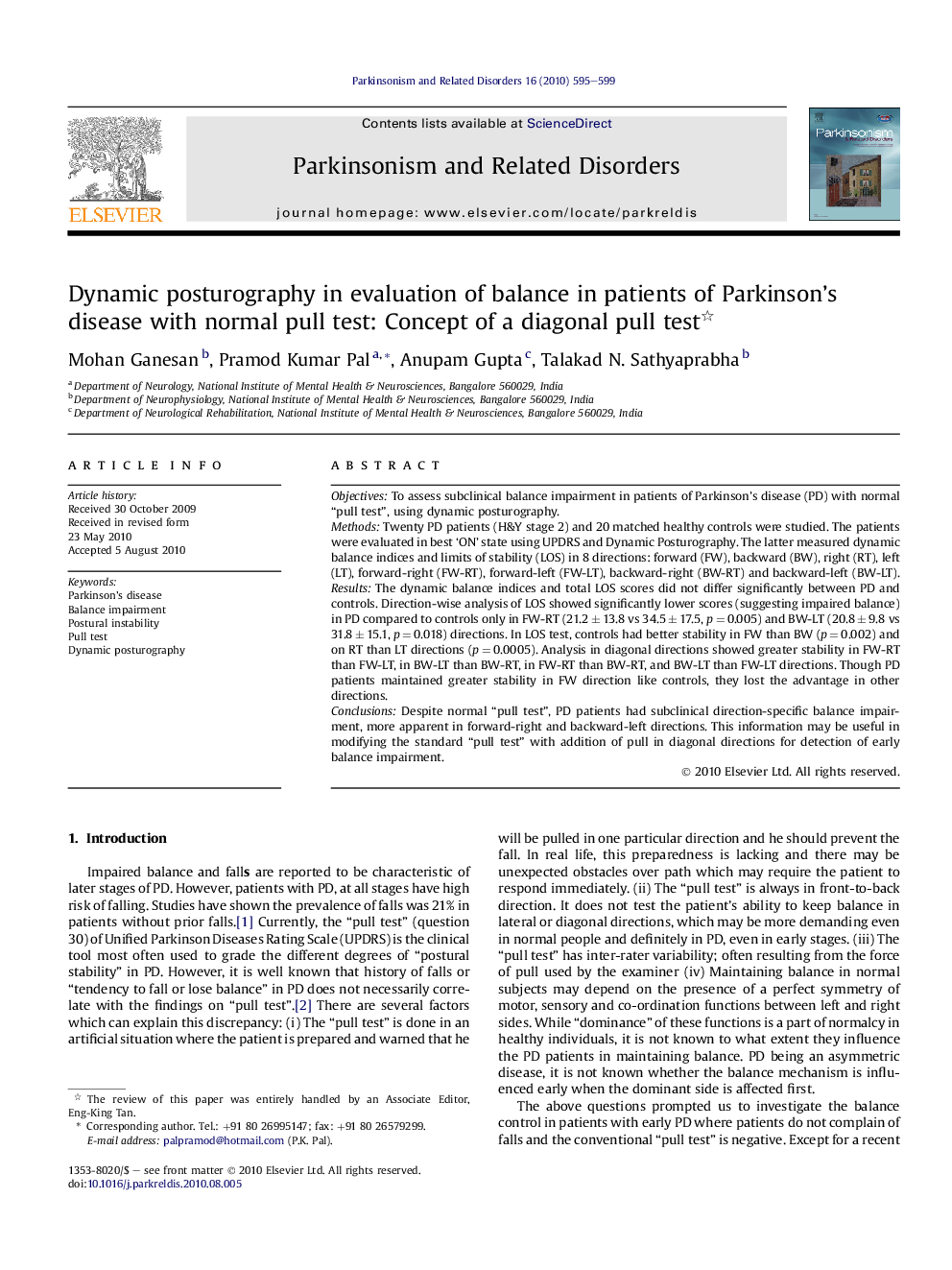| کد مقاله | کد نشریه | سال انتشار | مقاله انگلیسی | نسخه تمام متن |
|---|---|---|---|---|
| 1921135 | 1048761 | 2010 | 5 صفحه PDF | دانلود رایگان |

ObjectivesTo assess subclinical balance impairment in patients of Parkinson’s disease (PD) with normal “pull test”, using dynamic posturography.MethodsTwenty PD patients (H&Y stage 2) and 20 matched healthy controls were studied. The patients were evaluated in best ‘ON’ state using UPDRS and Dynamic Posturography. The latter measured dynamic balance indices and limits of stability (LOS) in 8 directions: forward (FW), backward (BW), right (RT), left (LT), forward-right (FW-RT), forward-left (FW-LT), backward-right (BW-RT) and backward-left (BW-LT).ResultsThe dynamic balance indices and total LOS scores did not differ significantly between PD and controls. Direction-wise analysis of LOS showed significantly lower scores (suggesting impaired balance) in PD compared to controls only in FW-RT (21.2 ± 13.8 vs 34.5 ± 17.5, p = 0.005) and BW-LT (20.8 ± 9.8 vs 31.8 ± 15.1, p = 0.018) directions. In LOS test, controls had better stability in FW than BW (p = 0.002) and on RT than LT directions (p = 0.0005). Analysis in diagonal directions showed greater stability in FW-RT than FW-LT, in BW-LT than BW-RT, in FW-RT than BW-RT, and BW-LT than FW-LT directions. Though PD patients maintained greater stability in FW direction like controls, they lost the advantage in other directions.ConclusionsDespite normal “pull test”, PD patients had subclinical direction-specific balance impairment, more apparent in forward-right and backward-left directions. This information may be useful in modifying the standard “pull test” with addition of pull in diagonal directions for detection of early balance impairment.
Journal: Parkinsonism & Related Disorders - Volume 16, Issue 9, November 2010, Pages 595–599